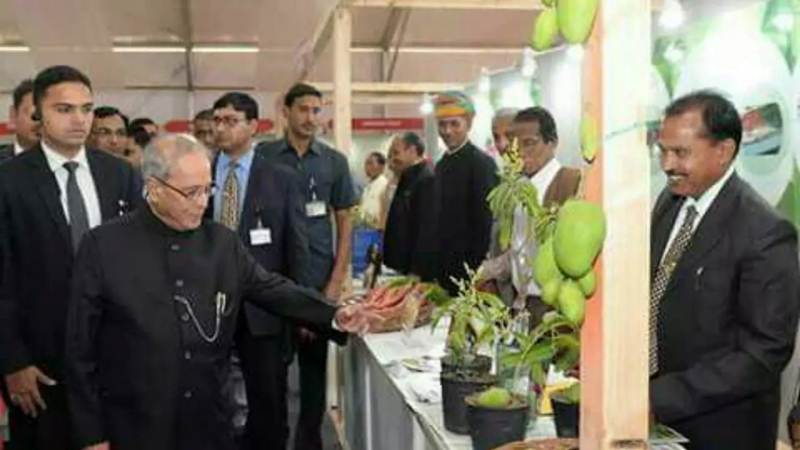A mango variety that fruits thrice a year and is suitable for kitchen gardening
Employing grafting technique, a school dropout farmer has developed mango variety that bears fruit thrice a year. This ‘Sadabahaar’ (perennial) mango variety has won him recognition and fame from across the country.


This variety of mango tree bears fruits three times a year — January-February, June-July and September-October. Photo by arrangement.
Here is some good news for mango lovers! They no longer have to wait a year to relish their most favourite fruit that hits the market in the summer season.
A 53-years-old school dropout farmer from Rajasthan has achieved a feat by developing a mango variety that bears fruit for three seasons in a year.
Employing grafting technique, Srikishan Suman mixed desi mango varieties and it took him 15 years of dedicated experiments to come up with the ‘Sadabahaar’ (perennial) mango variety which won him recognition and fame from across the country.

Also Read: Maharashtra lockdown – Fresh troubles for Alphonso farmers and traders
Native of Girdharpura village in Rajasthan’s Kota district, Suman had quit school in the eleventh standard and received no formal training ever since.
“Due to family reasons and financial difficulties, I had to drop out of school in class eleven. I started cultivating paddy and wheat to support my family but I suffered losses so I switched to farming ornamental plants (horticulture) and also planted a few mango trees on my field,” Suman told Gaon Connection.
“I experimented with the graft stems of these trees and it took 15 years for me to successfully develop this variety,” he added.
This variety of mango tree bears fruits three times a year — January-February, June-July and September-October.
In 2000, he identified a mango tree in his orchard with an appreciable growth trend and dark green coloured leaves. He noticed that the tree bloomed round the year. On observing these traits, he prepared five grafted mango plants using it as a scion. Finally the new variety was produced in 2015.
The Sadabahaar mango variety is akin to the langra mango in taste and due to its dwarfed size, it can be planted easily anywhere. Some enthusiasts have even used pots to plant the Sadabahaar variety.
For the last four years, Suman has received more than 8,000 orders for the plants that he grows and supplies to all over the country.
When asked about the response from outside his home state of Rajasthan, Suman said: “In many states, plants grow at a faster rate than in my fields. The plants are bearing fruits and the orders for more plants are being placed incessantly. My plant has also been included in the Mughal Garden at the Rashtrapati Bhawan.”
Suman has himself planted more than 500 plants in the agricultural research centres in Madhya Pradesh and Rajasthan.
The Sadabahaar mango variety has also been recognised by the National Innovation Foundation (NIF). The institute has also provided the samples to Central Institute for Subtropical Horticulture (CISH) to evaluate this new variety.
For his innovation, Suman was conferred the NIF’s 9th National Grassroots Innovation and Traditional Knowledge Award on April 5.
“The fruit is sweeter in taste, comparable to langra and being a dwarf variety, is suitable for kitchen gardening, high-density plantation, and can be grown in pots for some years too,” the Press Information Bureau stated while facilitating Suman for his achievement.

